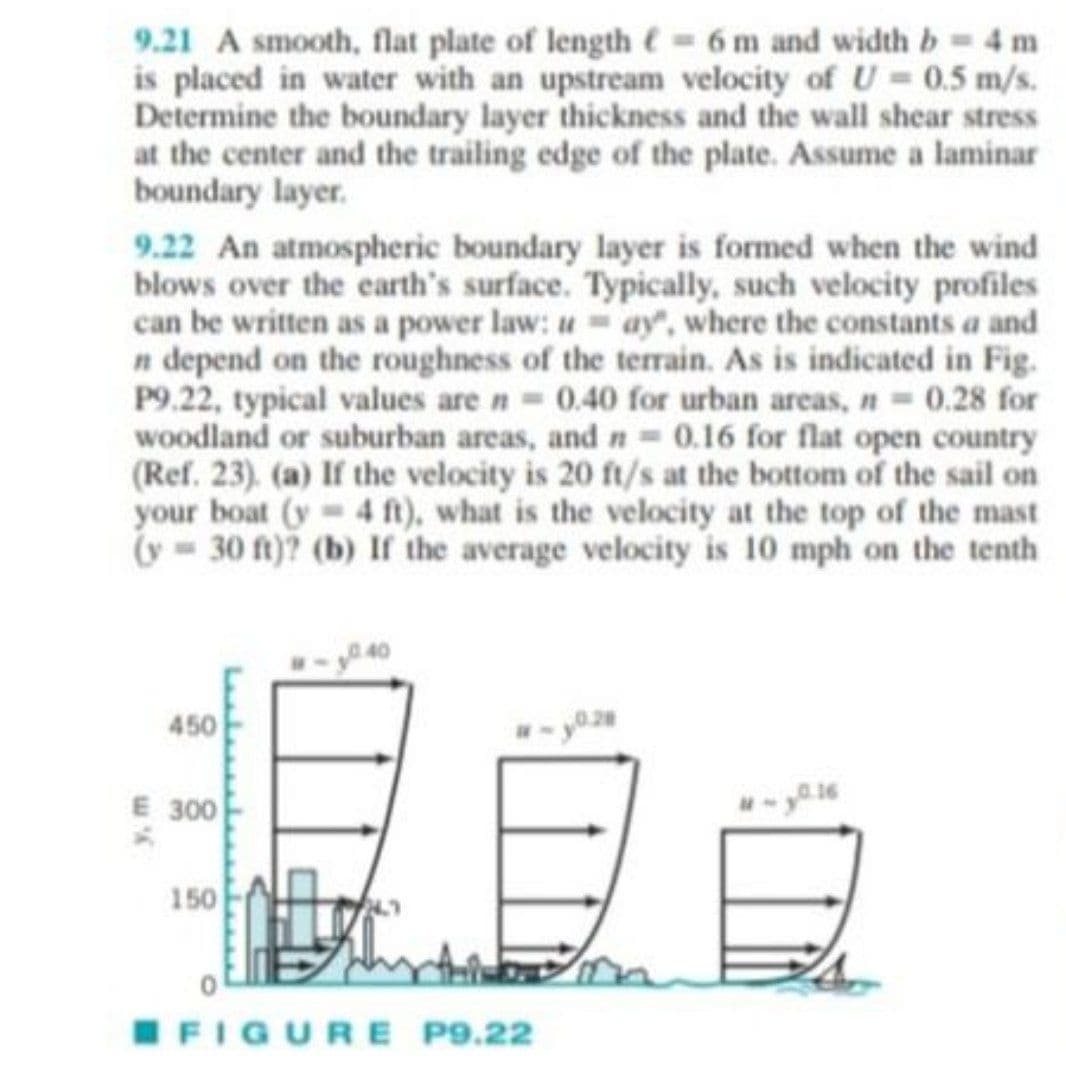smooth, flat plate of length and wid is placed in water with an upstream velocity of U Determine the boundary layer thickness and the wall at the center and the trailing edge of the plate. Assum boundary layer.
smooth, flat plate of length and wid is placed in water with an upstream velocity of U Determine the boundary layer thickness and the wall at the center and the trailing edge of the plate. Assum boundary layer.
Fundamentals of Geotechnical Engineering (MindTap Course List)
5th Edition
ISBN:9781305635180
Author:Braja M. Das, Nagaratnam Sivakugan
Publisher:Braja M. Das, Nagaratnam Sivakugan
Chapter14: Lateral Earth Pressure
Section: Chapter Questions
Problem 14.18CTP
Related questions
Question

Transcribed Image Text:9.21 A smooth, flat plate of length = 6 m and width b = 4 m
is placed in water with an upstream velocity of U= 0.5 m/s.
Determine the boundary layer thickness and the wall shear stress
at the center and the trailing edge of the plate. Assume a laminar
boundary layer.
9.22 An atmospheric boundary layer is formed when the wind
blows over the earth's surface. Typically, such velocity profiles
can be written as a power law: u=ay, where the constants a and
n depend on the roughness of the terrain. As is indicated in Fig.
P9.22, typical values are n = 0.40 for urban areas, n = 0.28 for
woodland or suburban areas, and n = 0.16 for flat open country
(Ref. 23). (a) If the velocity is 20 ft/s at the bottom of the sail on
your boat (y= 4 ft), what is the velocity at the top of the mast
(y 30 ft)? (b) If the average velocity is 10 mph on the tenth
450
0.28
E 300
150
FIGURE P9.22
Expert Solution
This question has been solved!
Explore an expertly crafted, step-by-step solution for a thorough understanding of key concepts.
This is a popular solution!
Trending now
This is a popular solution!
Step by step
Solved in 2 steps with 2 images

Knowledge Booster
Learn more about
Need a deep-dive on the concept behind this application? Look no further. Learn more about this topic, civil-engineering and related others by exploring similar questions and additional content below.Recommended textbooks for you

Fundamentals of Geotechnical Engineering (MindTap…
Civil Engineering
ISBN:
9781305635180
Author:
Braja M. Das, Nagaratnam Sivakugan
Publisher:
Cengage Learning

Fundamentals of Geotechnical Engineering (MindTap…
Civil Engineering
ISBN:
9781305635180
Author:
Braja M. Das, Nagaratnam Sivakugan
Publisher:
Cengage Learning